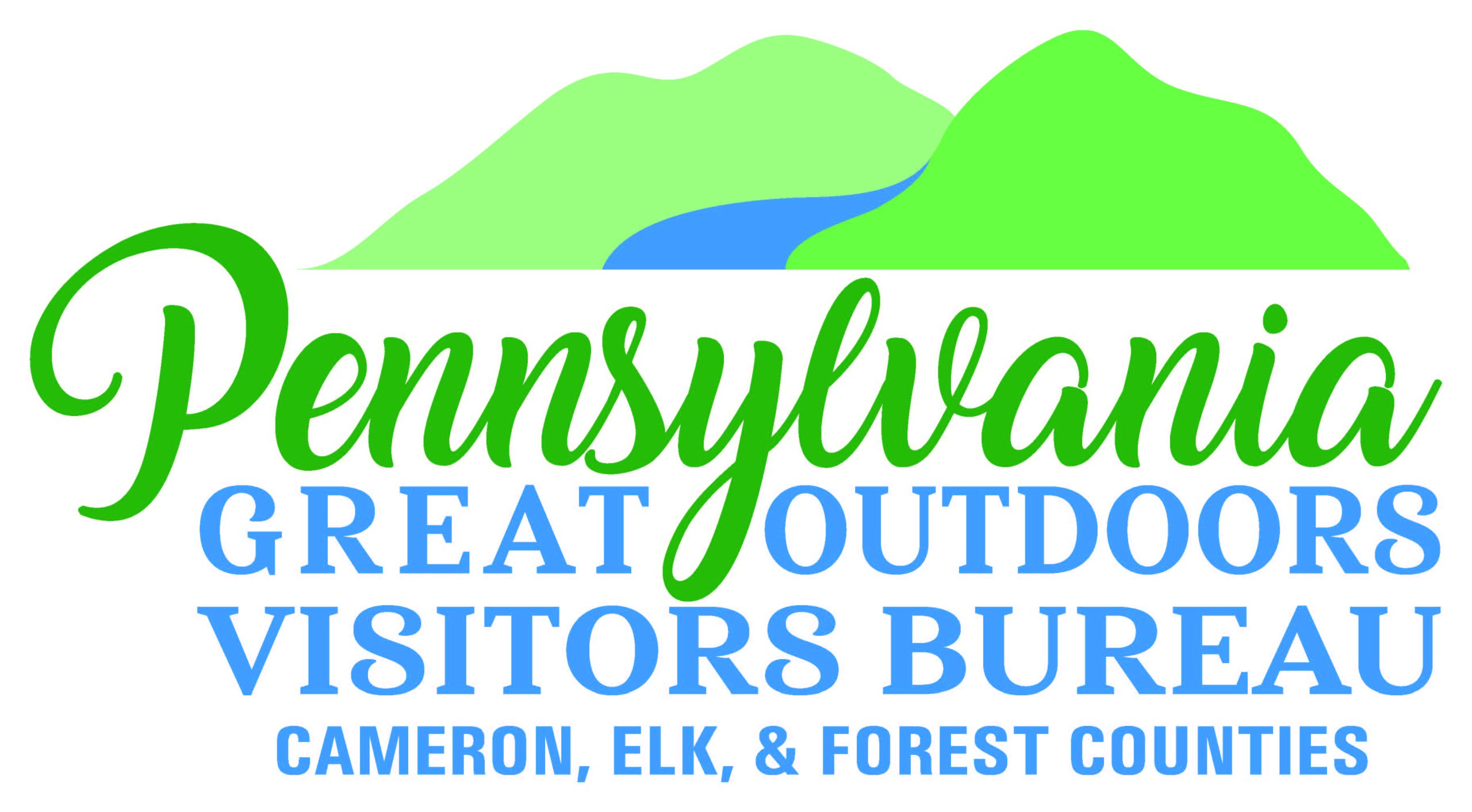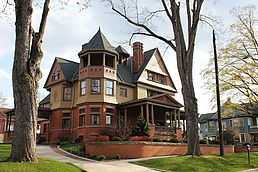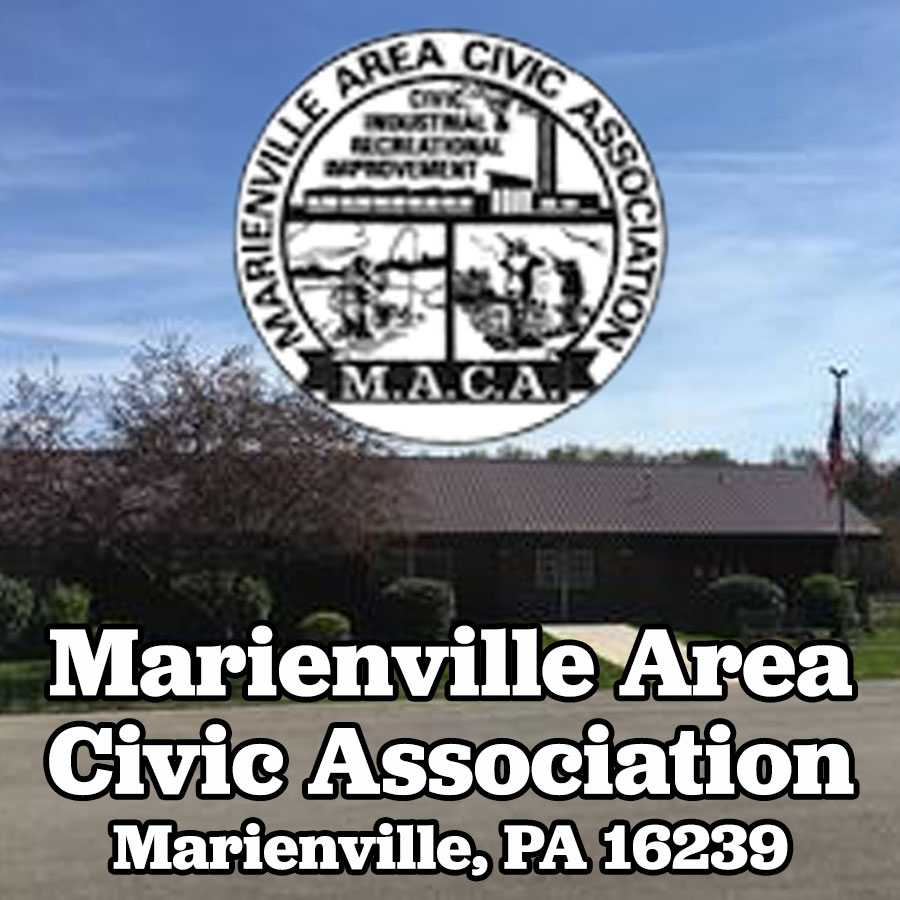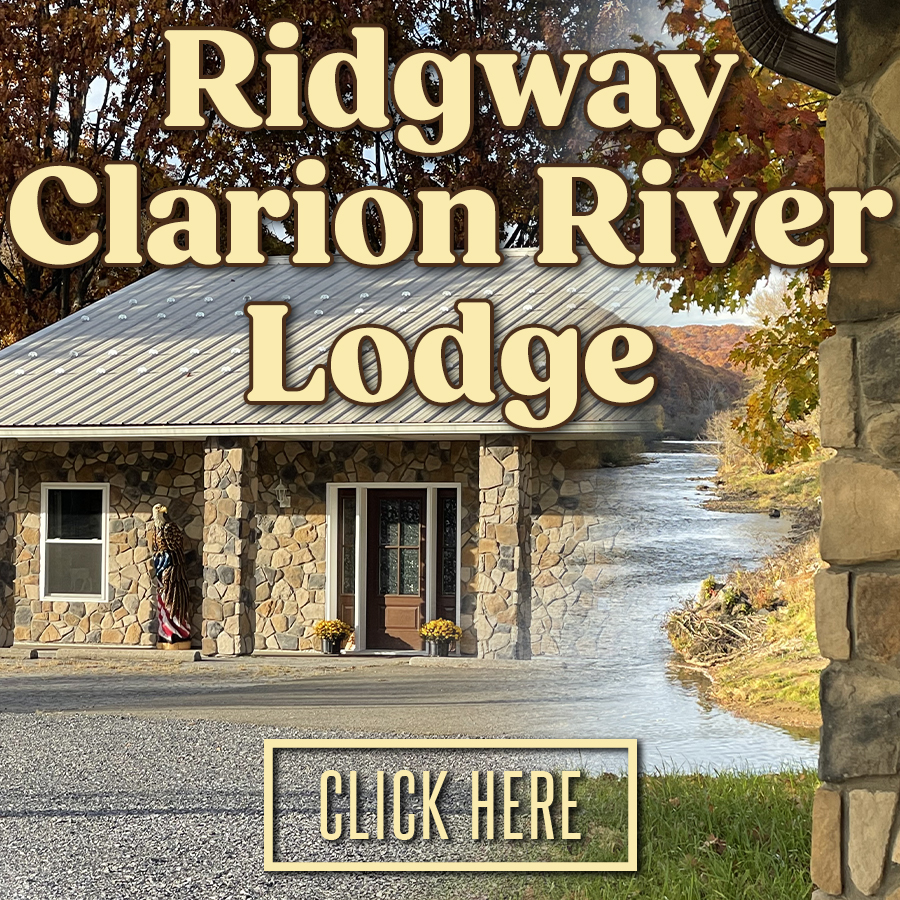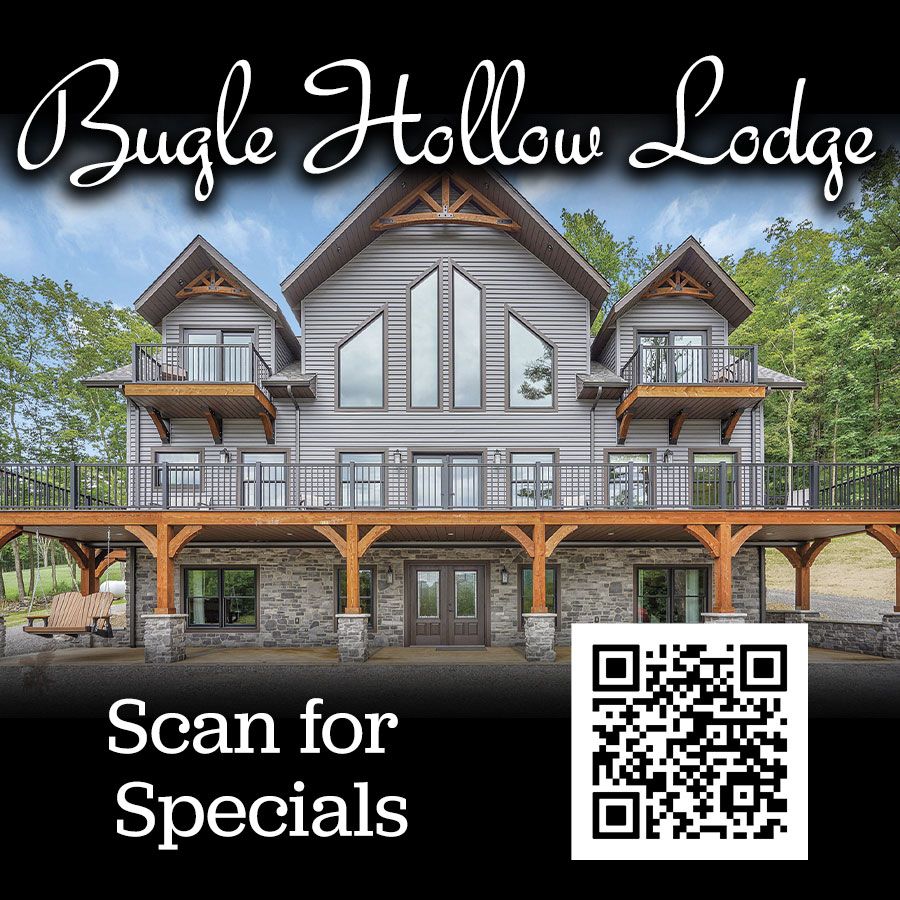Written by Bob Imhof
Nestled along the Clarion River at the edge of the Allegheny National Forest is historic Ridgway, a quaint and friendly town with an illustrious past. Once the home of Gilded Age lumber barons, Ridgway boasts stunning Victorian architecture, a bustling downtown of shops and restaurants, and that warm and welcoming atmosphere you can only find in Northwestern Pennsylvania.
In January of 2003, the “Lily of the Valley” National Historic Register District” was officially listed by the National Park Service. The nomination work was prepared by the Taylor and Taylor firm from Brookville and was funded by the Ridgway Heritage Council and the Stackpole-Hall Foundation. The district, as defined by the Pennsylvania Historical and Museum Commission, includes the downtown business district and a substantial residential section on the south side of Ridgway. There are approximately 730 contributing historic properties in the district. The district is roughly bounded by the Borough line on the South, Hyde Avenue Extension, East Main Street and Sherman Avenue on the east, Erie Alley, Race Street, Main Street and Elm Street on the north, and North Broad Street, State Street and Water Street on the west.

At its peak between 1890 and 1920, Ridgway was classified as the richest “per capita” community in Pennsylvania with eighteen millionaires in a population just over 6,000 people.
The Ridgway Historic District is significant under National Register Criterion A for its association with industry and politics/government. The district contains the Elk County Court House and jail and served as the seat of county government throughout the period of significance of the district (c. 1850-1952). The district’s links to the patterns on industrial development are clearly represented in its close association with the Hyde-Murphy Company, evident in the presence of the Hyde-Murphy Office Building, homes of the Hydes and Murphys, and many homes, institutional buildings, and commercial architecture erected by this prolific firm. The district contains the work of regionally-prominent architects and builders such as the Hyde-Murphy Company, manufacturers of building materials and building contractors in their own right. Ridgway’s significance is inextricably tied to the heritage of Hyde-Murphy, since this single firm was responsible for so much of the distinguished architecture which characterizes this community. Their work is seen in entire buildings as well as porches, window sash, and exterior trim, along with a full complement of interior finishes. In addition, Hyde-Murphy’s in-house architect, H. C. Park, was a leading regional designer for more than a quarter-century and is well represented in the district. Along with formally-designed homes are vernacular adaptations of many individual design modes as well as examples of purely vernacular architecture, which, although executed without reference to formal design tenets, are nonetheless the significant manifestations of local building tradition in Elk County.
The success of the lumber industry in the region was most directly responsible for the growth of the community of Ridgway during the last quarter of the nineteenth century, and this prosperity was a significant factor in shaping the character of the Ridgway Historic District. In addition to the operations of Hyde-Murphy and several large tanneries (no longer extant), many of the commercial and residential properties in the district were built from the fortunes of lumber.

However, not all homes in the district were erected for lumber magnates. Industrialists with other specialties along with lumber industry laborers and operators of a lesser stature populated the district as well.
The economic growth of the community was reflected in the annexation of several adjacent parcels from Ridgway Township, which surrounds the borough on all sides; among these annexations are the early 1890s ceding of the areas of West Ridgway and Eagle Valley. Along with this physical growth came the rise of speculative building within the district. Typical of this activity is Hyde-Murphy executive Samuel P. Murphy’s construction of five houses on Allenhurst Avenue in 1900 and Mrs. J.K.P. Hall’s construction of five homes on Dewey Avenue, described as being “handsome new homes [which] will cost about $2,000 to $3,000 and will be an ornament to the town.” Upon their completion, they were hailed as “very neat and convenient modern homes.” The following year, C.J. Swift, an educator and principal of the Ridgway Public Schools, commissioned the construction of six residences, which were described in the local newspaper as being “six handsome and modern homes for rent.”
One of the more ambitious examples of entrepreneurial activity in the growing community was Frank McGloin’s record in the real estate investment. In 1898, the local newspaper reported that McGloin had lived in Ridgway for the past twenty-six years, and “he can with just pride to the fact that he owns and has paid for a house every year he has been in town.” The article continued that he had just acquired building lots on Center Street and “Mr. McGloin’s twenty-seven years’ residence in Ridgway will not be reached until next March, and, in order that his record for one house for every year may not be broken, it is his intention to build on one of the new lots before that time.”
As the stands of timber were exhausted in the last years of the nineteenth century and the early years of the twentieth century, Ridgway’s growth and building activity continued due to the significant growth of a broad industrial base within the community. Industries in Ridgway during that time included the J. H. McEwen Manufacturing Company, the Elk Tanning Company (which operated two large tanneries), the Ridgway Press Brick Standard Ax and Tool Works, and the lumber mills of B. F. Ely and Sons. None of these industrial operations was located in the district, but the homes of the managers and the workers are found throughout.
The Ridgway Historic District achieved ethnic diversity following the Civil War. This settlement pattern continued into the late nineteenth century, as Swedish, Irish, and Italian immigrants arrived in the growing community. At one time, Ridgway was forty percent Swedish, evidenced by the fact that two thriving religious congregations, the Evangelical Covenant and the Bethlehem Lutheran, were of Swedish derivation. Irish and Italian immigrants, too, populated Ridgway; the defunct Parish of the Sacred Heart of Mary has its church, rectory/convent, and school in adjacent buildings located at 443, 449, and 439 East Main Street, respectively.
The industrial prosperity of the community contributed significantly to the growth of the Borough’s commercial district. Ridgway’s earliest commercial buildings were primarily of wood construction; nearly all of these were replaced by more substantial brick buildings, reflecting the growth of the fortunes of the community late in the nineteenth century. Of the more than seven hundred contributing resources in the district, nearly one hundred are commercial buildings whose mercantile use dates from the period of significance; Main and Broad Streets are lined with commercial architecture, nearly all of which date from within the period of significance. This architecture includes buildings which housed a diversity of shops and businesses, hotels, banks, and offices which were directly linked to the district’s position as a local and regional commercial and industrial center as well as one transportation-related resource, the 1907 Pennsylvania Railroad Station, located north of the central business district and immediately north of Elk Creek on North Broad Street.
For a copy of the Ridgway “Lily of the Valley” Walking Tour of Historic Homes, please email your request to info@visitpago.com . For more information on Ridgway and many other historic places to visit in the great outdoors, go to VisitPAGO.com.
